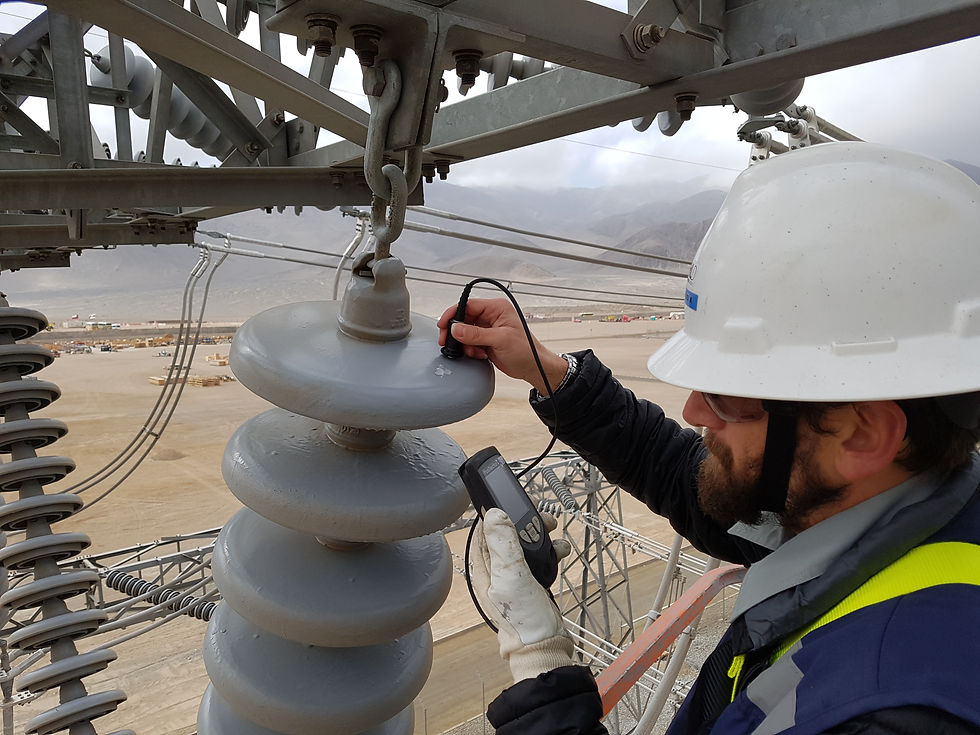Coated vs. Uncoated Insulators: Which Pays Off Faster?
- anasofiarojas
- Jul 30
- 2 min read
In environments where pollution, salt, and dust build up fast, power infrastructure is under constant stress. To avoid failures like leakage current, corona effect and even power outages, coated vs. uncoated insulators becomes a key decision to ensure system reliability. The insulators need either to be constantly washed or coated with RTV, also known as High Voltage Insulator Coating.
In that case, is it smarter to keep washing insulators or switch to a long-term solution like HVIC?

Energy Loss from Leaking Insulators
Uncoated insulators continuously leak about 2 milliamps each. That might seem negligible, but across a network of thousands, it adds up to major energy losses. Some utilities report leakage alone costing up to $360,000 per year.
The True Cost of Washing Electrical Insulators
Then there’s cleaning. In contaminated regions, insulators must be washed regularly—often while the lines are energized. This requires specialized equipment and trained crews, making it a high-risk, high-cost operation. Annual cleaning expenses can reach $900,000.
Even with that effort, outages still happen—especially between cleaning cycles. Just 10 outages per year over four years could result in $3 million annually in lost power. Over a decade, the total cost of using traditional uncoated insulators adds up to more than $30.6 million.
Alternative to Leaking Insulators

HVIC from Midsun IKM offers a different approach. A one-time application creates a durable, water-repellent coating that lasts 15 years or more. Once applied, leakage is reduced to zero, and the need for costly washing disappears. Routine maintenance is limited to simple visual inspections during standard substation checks.
HVIC has been proven in some of the world’s toughest environments—from deserts to coastal zones. In one Middle Eastern project, a complete HVIC application cost $5.4 million, compared to the $30.6 million spent maintaining uncoated insulators over the same timeframe—a savings of over $25 million.
When Does HVIC pays Off: ROI
Most utilities recover their investment in HVIC within 2.5 to 6.5 years, depending on system size and environmental conditions. After that, the savings continue to grow—without adding complexity to your maintenance program.
When Should Utilities Use HVIC Coatings on Insulators?
High Voltage Insulator Coating is a practical, proven way to reduce leakage, eliminate costly cleaning, avoid outages, and improve system reliability.
It’s use is recommended if your network operates in challenging environments like:
In coastal environments
In industrial areas with heavy pollution
In desert or arid regions
In high-risk, hard-to-reach locations
Or under the following circumstances:
Where washing is expensive or hazardous
When reducing energy loss is a priority
When improving grid reliability is critical
During new installations or repairs
If your network operates in one of the environments or conditions mentioned above, the HVIC from Midsun is worth serious consideration.
Want to talk to expert and see what it could mean for your system? Let’s discuss!


Comments